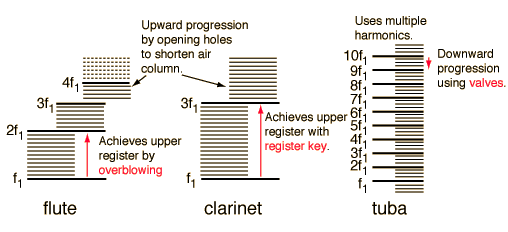Air Column Instruments
The woodwind instruments use only the first few resonances of air columns and depend upon opening holes in the sides of the air columns to ascend in pitch. The brass instruments employ a large number of resonances (harmonics) of their air columns and make use of valves or slides to lengthen the air columns for a downward progression of pitches.

| Overblowing the flute | Clarinet register key | Harmonics with brasses |
| Air column resonances | Air column excitation | Upper registers |
Musical instruments
Musical acoustics foundations
| HyperPhysics***** Sound | R Nave |